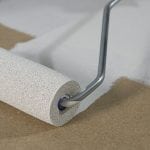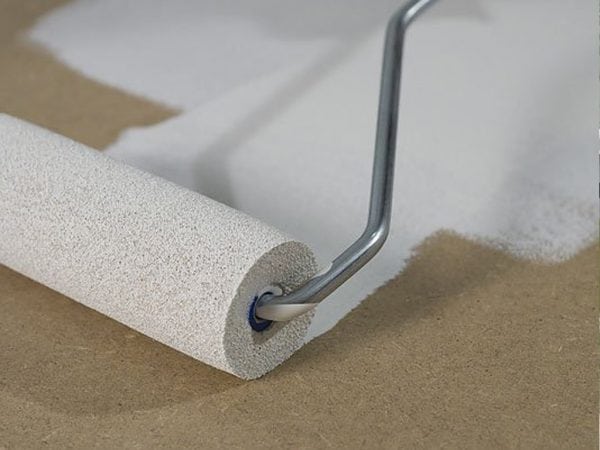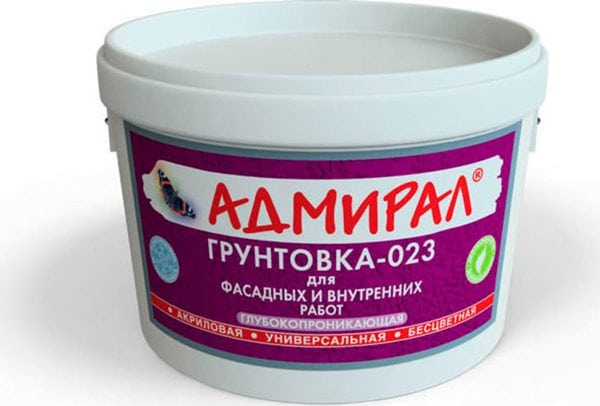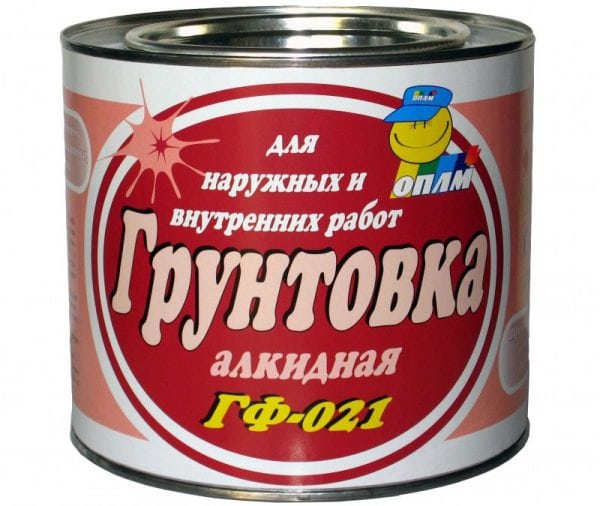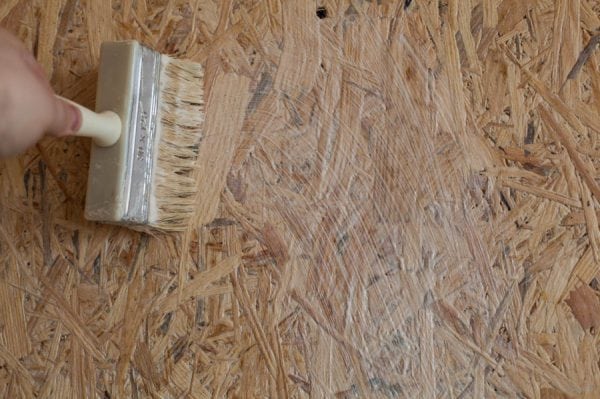Particle Boards (Particle Boards) - a durable, reliable material suitable for street construction or indoor decoration. But chipboards made by pressing from wood chips with the addition of adhesive resins are also vulnerable to adverse environmental factors, as well as the wood that served as their raw material. Chipboard life can be extended with a chipboard primer.
Rules for choosing a primer
Before you buy a primer, you need to determine what factors will affect the product from particleboard, what finish will be carried out, where it will be located.
Priming objectives may be:
- smooth the slightly rough surface of the chipboard before decorating;
- increase wear resistance (if the floor is made of chipboard);
- increase adhesion (laminated particleboard);
- protect the wood base of the slab from rot, fungus or mold.
The choice of composition depending on the location:
- Outside. It is necessary to purchase a primer for facade woodwork that provides maximum protection against moisture, temperature extremes and UV rays, preferably with the addition of an antiseptic that prevents the development of rot, and flame retardants.
- In a dry room, any universal or for wood is suitable.
- In humid rooms (kitchen, bathroom) it is necessary to use moisture-resistant primers with the addition of preparations for fungus and rot. When processing, it should be borne in mind that the material strongly absorbs moisture, swells, so it is better to take deep penetration soils that can provide more complete protection.
The final finish may be:
- wallpaper sticking;
- painting;
- decorative painting;
- decoration with tiles (gypsum, tile).
The composition of the primer
According to the active substance, primers are divided into the following types:
- Alkyd. It is considered one of the best for processing products with a wooden base. Alkydna forms a dense matte film on the wood surface of the plate, which has high protective properties, is excellent for outdoor work. Its use increases the wear resistance of the material. Non-toxic, but dries for a long time (up to 18 hours).
- Acrylic water soluble. This chipboard primer, like wood primers, is often available with antiseptic additives. Non-toxic, easy to apply to the surface, dries quickly (2-3 hours).
In addition, you can primer the wood base before decorating with:
- liquid wax produced in cans or spray cans;
- self-made mixture of turpentine with beeswax;
- mixtures of PVA glue with wood powder.
Waxing is not suitable for the subsequent application of glue (tiled or wallpaper), but serves as an excellent way of processing before applying varnishes or paints.
In addition, decorative finishes must be taken into account.The primer must not enter into a chemical conflict with:
- wallpaper glue;
- adhesive base for tiles;
- paints and varnishes.
In addition to the primer, selected taking into account all the parameters of the workpiece, you need to prepare the following tools:
- a set of "skins" for grinding (it is undesirable to use a grinding machine);
- roller, brush or spray gun;
- the container where the primer mixture will be poured, if a brush or roller is used.
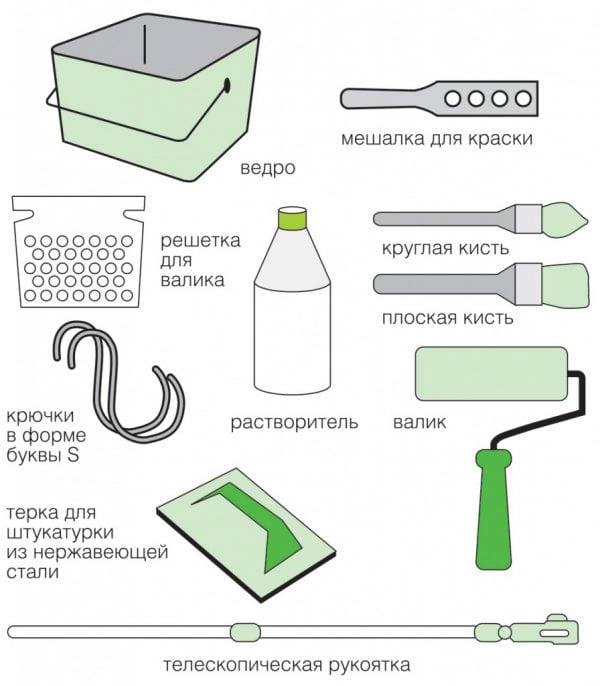
Application Technique
Chipboard priming is carried out according to the same scheme as conventional wooden substrates:
- The area of the base before applying the soil mixture is cleaned of dust, dirt, and the remnants of the decorative finish. This can be done using a damp cloth or using a vacuum cleaner.
- Irregularities and raised “hairs” are leveled with abrasive paper (“skins”), gradually moving from coarse to finer grains. For a smooth laminate base, alignment is not performed.
- After leveling, the surfaces are again cleaned of dust. If possible, then you need to wash and dry it.
- Degrease. This procedure is necessary for laminated wood boards, it will increase adhesion, improve the quality of the final decorative finish. As a degreaser, you can use inexpensive and affordable white spirit or other alcohol-containing solutions.
At the end of the preparatory work, you must immediately begin priming. If this is not done, then on a prepared basis dust may accumulate, which will prevent the soil mixture from evenly absorbing over the entire cultivated area. This will reduce its protective properties and adversely affect the final finish.
The process of priming wood chipboards is almost no different from wood processing. It is carried out as follows:
- A solution is prepared: the concentrates are diluted with a solvent, as indicated in the instructions. Ready mixes are thoroughly mixed.
- The composition is poured into a convenient container.
- Primer mixes should be applied evenly, using a roller over large areas, and hard-to-reach spots or small parts should be painted with a brush.
- After the first layer has dried, the priming is repeated. If the first layer was superimposed by vertical movements of the roller (brush), then when reprocessing, the primer mixture should be applied by horizontal movements.
- If necessary, you can apply the third and subsequent layers, but, as a rule, a primer of 2-3 layers is enough to prepare the material for decorative decoration.
- When the last layer dries, the final finishing work can be done: glue the wallpaper, lay the tiles, paint or make decorative paintings on the surface.
Particleboard, unlike wood, which served as the raw material for its manufacture, is not an environmentally friendly material because of its constituent adhesive resins. The primer selected taking into account all parameters of the subsequent operation will not only protect the base from damage, improving the quality and durability of the finish, but also significantly reduce the harmful effect of resins on the human body. After all, wood boards covered with several layers of soil-mixture not only absorb moisture less, but also cease to emit harmful substances.

